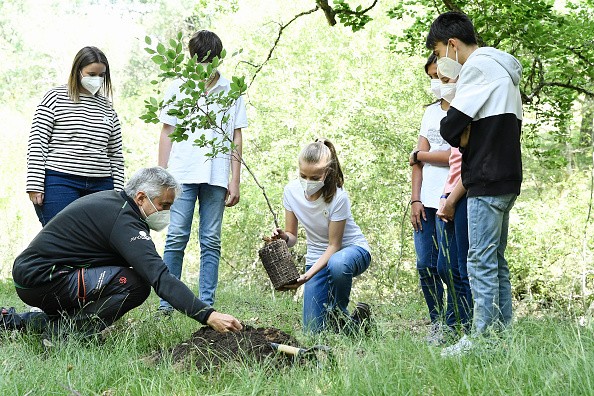Fungi, especially mycorrhizas, are allies of natural forests to improve the absorption of nutrients in trees. But which of the mycorrhizal feeding strategies results in the greatest tree diversity in ectomycorrhiza or arbuscular mycorrhiza?
Fungi belong to a kingdom of life completely separate from plants and animals and are found in all habitats on Earth. Beneficial mycorrhizal fungi form close bonds with trees growing around or inside the roots.
The fungus collects nutrients such as nitrogen and phosphorus from the soil and delivers them to trees in exchange for carbon-rich sugars produced through photosynthesis.
Mycorrhiza's powerful nourishing capacity

According to ScienceDaily, Alexis Carteron lead author of the study said, Mycorrhiza is a compound word of the Greek myco "fungi" and rhiza "root", a type of symbiotic relationship between plants and fungi that has existed since plant colonization on Earth millions of years ago.
On the two partners, this positive association with respect to terrestrial ecosystems is undoubtedly the most common and important form of 'mutualism' in terrestrial ecosystems.
Carteron holds a Ph.D. in Biology from the University of Montreal and is currently studying Environmental Sciences at the University of Milan in Italy. Also, a PhD Research Fellow in the Department of Policy Studies.
Botanists have long known that mycorrhizal fungi provide significant nutritional benefits to plants by allowing their root system to extend up to ten times the original root surface and better absorb water and minerals from the soil.
For example, mycorrhizal fungi dissolve phosphorus in the soil, making it available to plants. In turn, the plant provides the sugars produced by photosynthesis to the fungus.
The two main types of mycorrhiza, ectomycorrhiza and arbuscular mycorrhiza, appear to affect the diversity of forest tree species in different ways.
Ectomycorrhiza affects about 2% of plant species and mainly affects conifers in forests of the Northern Hemisphere. Arbuscular mycorrhiza is the oldest and most prevalent symbiotic relationship between fungi and plants, affecting 80% of terrestrial plants. The two differ in the way the fungus attaches to the roots of the plant.
Scientists have found that the forests in which arbuscular mycorrhizas have settled in the soil are more diverse. Species-rich tropical rainforests are mainly composed of arbuscular mycorrhizal trees, while ectomycorrhizal trees are predominant in the northern forests, where there are few seeds.
Can mycorrhiza helps combat climate change?
Mycorrhiza predominance can be determined at several levels, including root system, forest plots and biomes, this study shows the effect of mycorrhizas on ecological processes at the forest plot level. It emphasizes the importance of consideration.
At this scale, studies show that coexistence of mycorrhizal strategies can promote plant diversity, as per Mirage.
Forests with mixed mycorrhizal strategies are considered less common and can be overlooked by biologists, the researchers say. But the research has shown that this is not always the case and that these mixed types can actually occupy most of the world's forests.
Such forests, It can be an important tool for forest research and management for better ecosystem services. The climate is well-balanced, Carteron emphasized.
© 2025 NatureWorldNews.com All rights reserved. Do not reproduce without permission.





